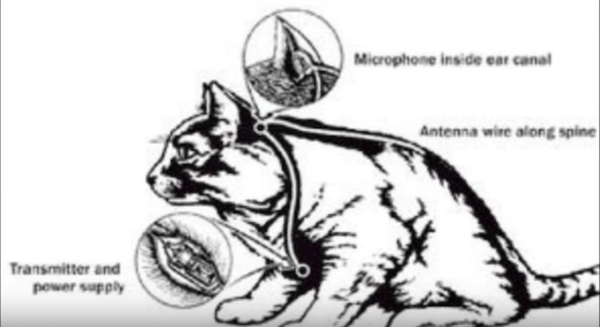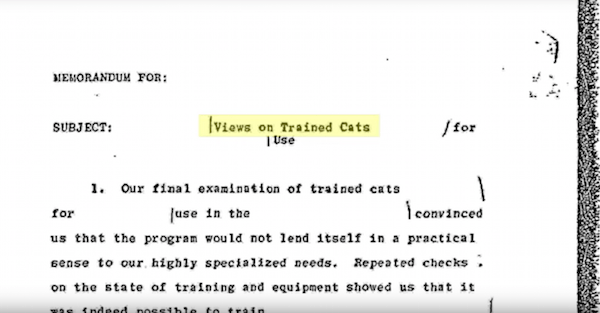
Public Domain Pictures
The 1960s were a weird time. That’s been pretty well documented. But in case you needed another example, look no further than the C.I.A. project known as Acoustic Kitty.
Acoustic Kitty, despite what the name may suggest, wasn’t a kitten singing without heavy instrumentation. Rather, it was a legitimate project by the Directorate of Science and Technology branch of the C.I.A., with the intention to use cats to spy on Soviet embassies during the Cold War. For real.
Acoustic Kitty Takes Shape
The idea was to have a cat – placed in particular locations like window sills, park benches, or dustbins – record sounds from its surroundings that would then be transmitted back to C.I.A. operatives.
The idea was hatched after C.I.A. officers noticed that, during an attempt to listen in on one particular head of state, the location happened to be crawling with feral cats. They noticed that the cats wandered the premise without catching anyone’s attention (except for theirs, apparently).
Another “sound” reason for the operation? Cats’ alleged curiosity. The agents involved believed that trained cats would go where they heard interesting sounds – because apparently the cats would find conversations between Soviet officials interesting. Due to their inconspicuous nature, the cats would go unnoticed as they passed by while recording the sounds, so the reasoning went.

YouTubeA veterinary surgeon implanted a mic and transmitter into the cat.
The C.I.A. recruited a veterinary surgeon to perform an hour-long procedure on a test cat. He implanted a small radio transmitter on the back of the cat’s neck, a microphone into its ear canal, and a nearly invisible wire across its fur that connected the two devices. Former C.I.A. officer Victor Marchetti put it a little more bluntly: “They slit the cat open, but batteries in him, wired him up.”
Training Prep
The C.I.A. then put the cat through a training process designed to teach it what exactly it was supposed to be listening to.
“The concept behind the Acoustic Kitty project was that unlike a mechanical bugging device, a cat’s ear had a cochlea, as did a human ear, that could filter our irrelevant noise,” Marchetti said.

YouTubeVictor Marchetti
Shockingly, they experienced some hitches along the way.
One problem was the batteries used to wire the recording and transmission device. Since cats are small, they were limited to using only the smallest batteries, which didn’t allow for much recording time.
Another issue was that the cat would get hungry. “They tested him and tested him,” said Marchetti. “They found he would walk off the job when he got hungry, so they put another wire in to override that.”
The first mission of Acoustic Kitty after the training process was to listen in on two men at a park outside the Soviet compound in Washington, D.C.
In a literal case of “curiosity killed the cat,” there was another hitch. After the cat was released near the park, it was hit by a cab and killed instantly. “There they were, sitting in the van with all those dials, and the cat was dead!” said Marchetti. It never even made it to its destination.
“I’m not sure for how long after the operation the cat would have survived even if it hadn’t been run over,” said Jeffrey Richelson, who was a senior fellow at the National Security Archive in Washington.
Abandonment
The project was officially discontinued in 1967. Although it was short-lived, it was costly. According to Marchetti, the C.I.A. spent $20 million on Acoustic Kitty.
Acoustic Kitty became public knowledge when documents – though heavily redacted – were declassified by the National Security Archive in 2001. After the operation was publicly disclosed, it faced a great deal of ridicule.

YouTubePart of declassified documents on Acoustic Kitty
The declassified documents portrayed the operation as a success, stating that “the work done on this problem over the years reflects great credit on the personnel who guided it…whose energy and imagination could be models for scientific pioneers.”
However, it also stated in the final examination that complications, particularly, “the environmental and security factors in using this technique in a real foreign situation… convinced us that the program would not lend itself in a practical sense to our highly specialized needs.”
Next, read about some more “innovative” C.I.A. operations, like project MKUltra, the plan to defeat the Soviets using mind control. Then read about operation Operation Mockingbird, the C.I.A.’s plan to infiltrate the media.






